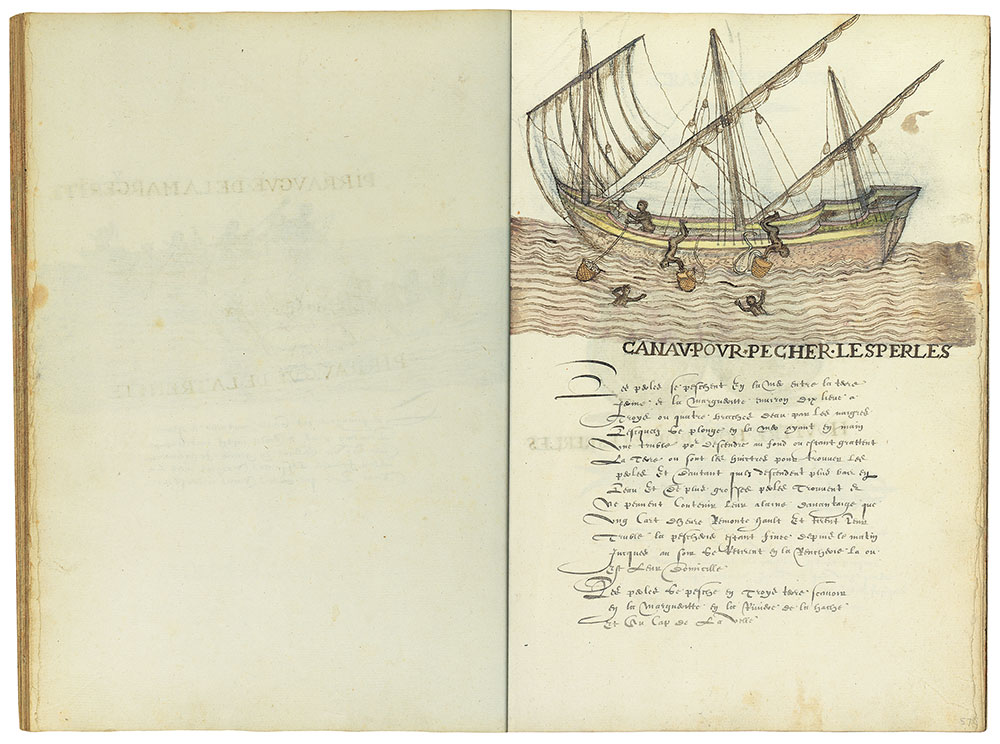
Histoire Naturelle des Indes
Illustrated manuscript
Bequest of Clara S. Peck, 1983
In 1983, The Morgan Library & Museum received, as the bequest of Clara S. Peck, an extraordinary volume whose beautiful paintings and descriptions document the plant, animal, and human life of the Caribbean late in the sixteenth century. Spaniards had already begun to exert influence over the indigenous people of the area when explorers from England and France arrived, among them Sir Francis Drake. The volume, known as the Drake Manuscript and titled Histoire Naturelle des Indes when it was bound in the eighteenth century, gives us a wonderful picture of daily life at the time of Drake's many visits to the region. Although Drake's connection to the manuscript is uncertain, he is mentioned on more than one occasion by the authors. Drake himself is known to have painted, but none of his work survives.
Contents: 199 images of West Indian plants, animals and human life, with accompanying manuscript captions written in late sixteenth-century French.
Medium: Most of the illustrations consist of a black chalk underdrawing and a combination of pen and brown ink with watercolor; on some images selected areas have also been glazed with a gum.
Binding: Bound or rebound in brown leather in the late 18th century.
Pagination: Penciled folio numbers (1–125) in lower right corner of each page were added by The Morgan Library & Museum. Folios 92v–93, 93v–94, and 95v–96 are fold-out leaves.
Canav Pour Pecher Les Perles (Canoe for Pearl-Fishing)
Pearls are being fished in the ocean between the main-land and Isla de Margarita, approximately ten leagues, in three or four fathoms of water by the negroes who dive into the sea, holding a hoop-net to descend to the bottom where they scrape the soil where the oysters are, in order to find the pearls. And the deeper they descend in the water, the larger are the pearls they find. Not being able to hold their breath longer than a quarter of an hour, they come up again and pull their hoop-net. The fishing from morning to evening having been completed, they return to La Rancheria where they live. Pearls are being fished in three places, namely, on Isla de Margarita, in Riohacha, and at the Cabo de la Vela.
